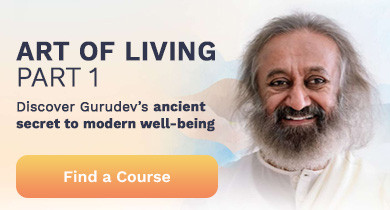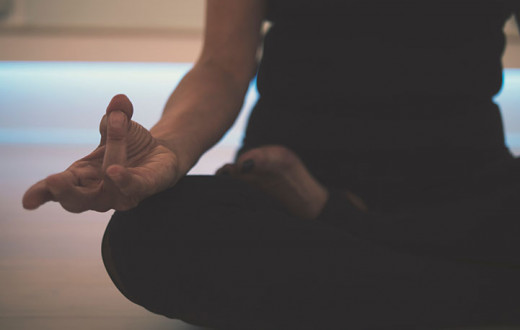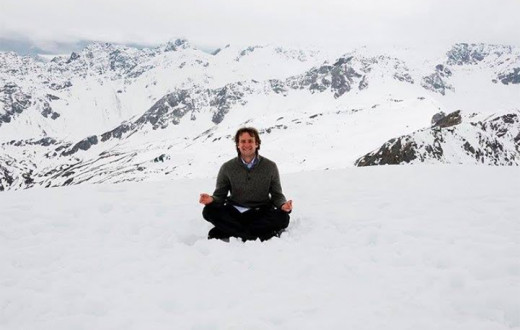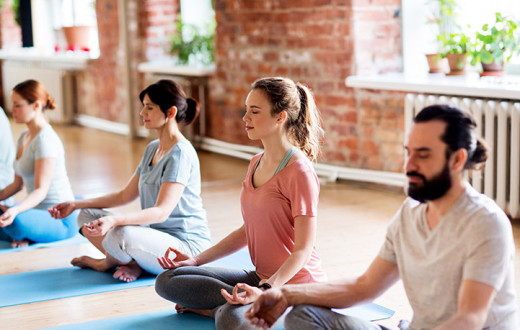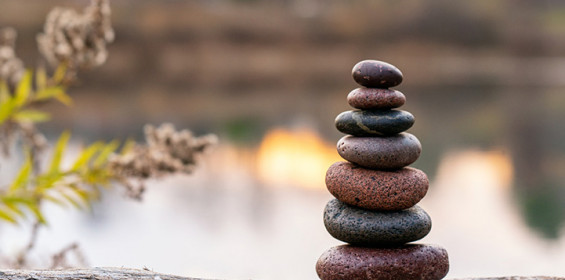
The relationship between a teacher and a student is delicate, sweet, and special. It’s like someone helping a bud blossom into a flower. In this process, one needs to be careful and allow the bud to blossom at its own pace.
The teacher is like a gardener who provides the right soil for the plant to grow, and eventually, bear flowers. A teacher provides the right atmosphere for the student to bloom into a wise and cheerful individual.
Teaching young children can be one of the most challenging jobs in the world. You may feel that you can’t afford to be emotional while teaching. At times, you may be forced to make the students your number one priority, putting their needs over your own. And if you’re someone who tries to make everything perfect for the kids, your job may seem extra exhausting. This can leave you drained emotionally, intellectually, and physically.
If you identify with any of these feelings, teacher meditations may be your number one companion as you nurture young ones. There are many different forms of meditation, so let’s find out how they work and how they can help you and your students have a stronger bond!
Topics Covered:
- The benefits of meditating for teachers
- Types of meditations for teachers to use throughout the day
- Examples of when to use meditations for teachers
- Learn more teacher meditations with The Art of Living
The benefits of meditating for teachers

No matter which type you choose to practice, you can be sure you’ll reap the benefits of meditation for teachers. These may include:
- Improved mental health: Meditation helps teachers cope with stress, and when practiced often, it can even combat it. As a result, teachers experience better overall well-being and happiness.
- More regulated emotional responses: When we feel overwhelmed, we are more reactive to the situations around us. Clearing your head and making some space for the present moment can help you respond more appropriately to the problems that arise in the classroom.
- Better performance: When you feel good, you’re able to stay at the top of your game! Even if stressful situations arise, you won’t be as affected by them as you would be if you were weighed down by negative emotions.
- Increased patience: A calm mind and inner peace allow you to be patient with your students and be a better teacher.
- Mindfulness: If you want to experience the benefits of mindfulness, such as improved focus and living in the present moment, regular meditation is crucial. That’s because mindfulness is the result of daily meditation practice. You’ll find your mind wanders less.
The benefits of meditation extend beyond the teacher — the whole class benefits when the teacher is in the right frame of mind. Children can pick up on their teacher's emotions, so when you’re at peace, you’ll find that your students are more receptive.
Types of meditation for teachers to use throughout the day

More and more teachers are using meditation or mindfulness practices for stress reduction. There are different types of meditations, each with a unique purpose or aim. However, teachers may especially benefit from the following types of meditation.
Compassion meditation
Compassion meditation helps us tap into and embrace our compassionate side. Teachers may find this meditation particularly helpful since they need to understand their students and what issues they are facing.
Being compassionate may allow you to view especially challenging students or situations in a new light, seeing all that is involved. Doing so can help you understand the good you’re doing and not take the challenges personally. This may make it easier to face the challenge without frustration.
Gratitude meditation
We all have things to be grateful for, even when we give a lot of our time and energy to others. When we are mindful of the good things in our life and take the time to dwell on them, we feel happier. Gratitude meditation makes it easier to deal with stress and keep problems in proper perspective.
Loving-Kindness meditation
If you want to increase feelings of love and be kinder to yourself and others, this type of meditation can help. It involves creating positive thoughts and directing them toward individuals. This practice can help you have a more positive view of your students and generate positive energy, letting go of negative feelings that build up during the day.
Breathwork meditation
A popular alternative to mindfulness meditations, breathwork is a simple practice you can do anywhere. Breathwork has numerous benefits, such as reduced stress and anxiety, improved mood, and increased energy — something all teachers could use!
Examples of when to use meditations for teachers
You know the benefits of meditations for teachers and the different types to choose from, but when should you be using them during the day? Below you’ll find some common scenarios and meditations teachers can try as they confront them.
When sharing your personal space
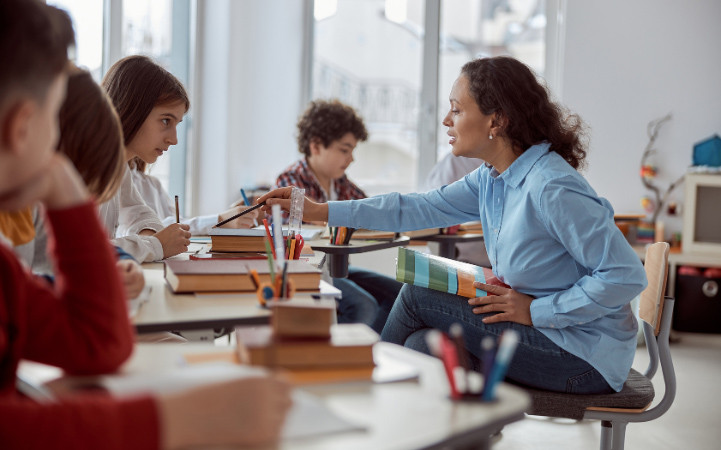
No one likes to be yelled at or made to feel small. Unfortunately, children may feel this way when they aren’t able to behave the way they want to.
Obviously, a level of discipline is required in the classroom. Yet, we can allow children to behave how they’d like to with gentle and positive guidance so that their actions don’t hurt others — creating constructive and creative behaviors rather than destructive ones. To create this balance, subtlety might be required on your part.
It also might require you to share your space so that you are able to guide the child like a kite — loosening the thread for the kite to expand and tightening it when needed.
Meditation kindles the subtlety in your mind. It helps you expand and gives you the ability to share yourself in a better way with kids. With regular practice of meditation, your tolerance increases and you are also in harmony with yourself. Things and people around you tend to synchronize with you faster. This makes your relations with students friendlier, helping you gain the respect and love of your students.
Tip: Make your smile inexpensive and your stern face expensive. Begin your day with meditation, such as SKY Breath Meditation. This effortless meditation will make you calm, meaning you’ll be able to reserve your anger and be firm only when really required. At other times you can be like a friend to your students.
Try to set aside time on a regular basis to have some fun with your children. While being firm, be creative in giving them an appealing reason as to why it is important to do certain things.
When dealing with impromptu questions

A question hits you out of nowhere and you’re caught off guard amidst 30 curious faces and eyes filled with wonder! How do you handle the situation? An attentive mind and high energy levels can help.
Meditation makes you more alive and energetic and helps you when you need to deal with "live wires". It helps you become attentive and aware most of the time and you can easily and confidently deal with these difficult questions thrown at you by these ignited minds.
Tip: Regular meditation coupled with Pranayama helps you calm down fast and develop the serenity and wisdom to answer the barrage of questions with ease. Programs like SKY Breath and Sahaj Samadhi Meditation combine meditation and pranayamas, making them ideal options for teachers.
When fatigue sets in

Can you imagine the difference it would make if you smiled every time you enter your class? Or how about wishing your students a great day before they leave? When you’re tired and rundown, it’s hard to imagine having the energy to be this chipper.
Fatigue at times can end up being a spoilsport for you. It happens when there is low energy in your body and you get irritated easily and are too tired to take a class. You can beat this by tapping into the source of energy besides food — meditation.
Like a butterfly has to be in the cocoon before it can spread its wings, we have to withdraw into the self for strength. Many meditation practitioners consider meditation techniques to be excellent sources of energy.
Tip: Meditation coupled with deep breaths acts as an instant energizer for your mind as well as your body. Utilize a break's time to enjoy a ten-minute meditation session as a form of self-love and care. Downloading the Journey App can help — you can do guided meditations whenever you have a short break before a Zoom call or during lunch.
When overcoming emotions

When you’re dealing with difficulties outside of class, you may find yourself lashing out at your students or overreacting. Whether you have to face your students after having a disagreement with a loved one or are facing financial problems, your personal emotional turmoil can carry over to the classroom. Of course, you never want your problems to affect your students’ development or learning, which is why meditation is important. It can help you leave any issues you are dealing with outside the class.
A meditative mind is calm, highly effective, and serene. It is like a ripple-free, calm lake. Even if a ripple comes, it quickly abates. Meditation practices help our minds settle down and relax. Meditation coupled with a carefree attitude brings emotional harmony. Once calm, you will be even more able to interact with the students skillfully.
Tip: If you are facing emotional turmoil, self-awareness is key. This is especially true when you are with your children. With awareness, you might free yourself from taking it out on them. Regular meditation will help you become more aware.
When having to be more than a teacher
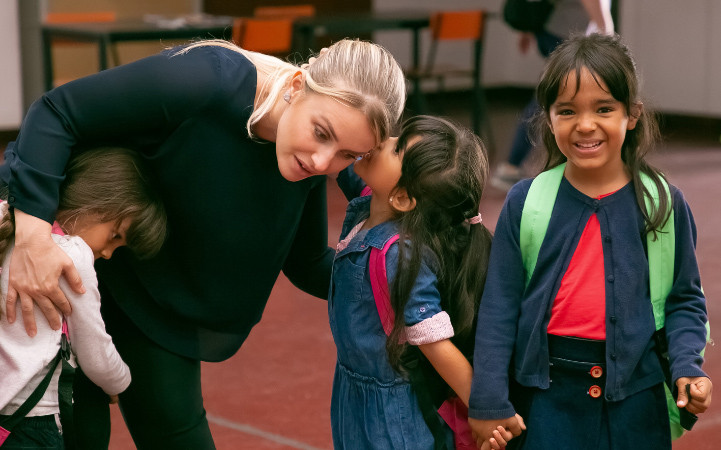
Teachers have to wear many hats — sometimes they take on the roles of parents, mentors, and friends.
Students are tender, supple, and highly impressionable. They form judgments about you in no time. Being natural with them might be a good idea. Also, allow them to have fun and get to know you. This helps them settle down in your presence quickly and very effectively.
Meditation helps you grow subtler in your presence and more natural in your behavior. Students see this and become more receptive and you are able to deliver your best to them.
Tip: Daily meditation practices help you go deeper into yourself. While in class, try to feel the students' presence and develop sensitivity toward their emotions. Respond to their emotions with compassion.
Learn more meditations for teachers with The Art of Living
If you’re ready to start your own practice, The Art of Living can help you get started! Our courses are designed for teaching meditation in a simple (yet effective) way. Take the time to become a student again, and see how meditation practice can make all the difference in your classroom.
Sign up for a free intro session today! You’ll see what our courses are all about and even have the chance to talk to a meditation coach. Or, if you prefer guided meditations or meditation scripts, browse the video playlists on our Journey App!



